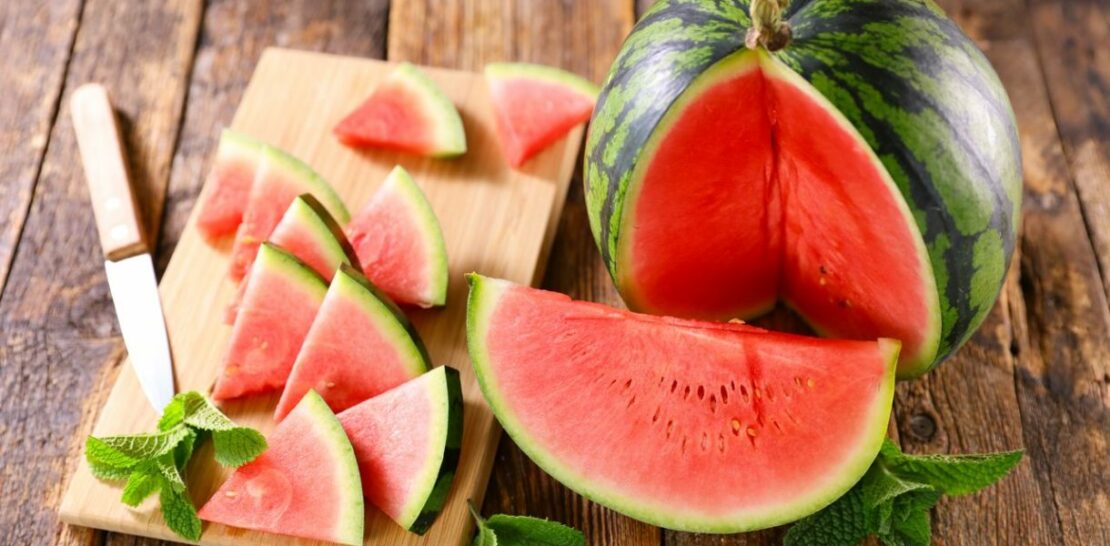Watermelon is a favorite summertime treat for many, with its refreshing taste and hydrating qualities making it the perfect snack for warm weather.
However, once a watermelon is cut and sliced, its shelf life can be significantly reduced, and maintaining its freshness and taste can be a challenge.
But fear not, for there is hope!
In this comprehensive guide, we will delve deep into the mysteries of watermelon preservation, exploring various techniques and methods to ensure that your sliced watermelon remains appetizing and delicious for as long as possible.
The Science Behind Watermelon Preservation
Before we discuss the various methods available for preserving cut watermelon, it is crucial to understand the scientific basis for why watermelon spoils and what factors contribute to its degradation.
Moisture Loss: A primary cause of watermelon spoilage is the loss of moisture from the fruit. Once cut, the water content in the fruit is exposed to the air, leading to the evaporation of water and subsequent loss of freshness. Proper storage techniques can help minimize this loss and maintain the juicy texture of the fruit.
Oxidation: When the flesh of a watermelon is exposed to oxygen, it undergoes a chemical reaction called oxidation. This process leads to the degradation of the fruit’s flavor, appearance, and nutritional value. By limiting the fruit’s exposure to oxygen, we can help slow down the oxidation process and preserve the taste and quality of the watermelon.
Microbial Growth: Bacteria and mold can develop on the surface of cut watermelon, leading to spoilage and decay. Proper hygiene and storage techniques can help prevent the growth of these harmful microorganisms and keep your watermelon fresh and safe to eat.
Tried-and-True Techniques for Preserving Cut Watermelon
Now that we understand the science behind watermelon preservation, let’s explore some of the most effective techniques for keeping your sliced watermelon fresh and delectable. These methods have been tested and proven effective by countless watermelon enthusiasts and will surely help you get the most out of your fruit.
- Refrigeration: Storing your cut watermelon in the refrigerator is perhaps the simplest and most effective method for preserving its freshness. Cold temperatures slow down the oxidation process and inhibit the growth of bacteria and mold. Be sure to store your watermelon in an airtight container or wrap it tightly in plastic wrap to minimize exposure to oxygen and moisture loss.
- Freezing: For longer-term storage, freezing your watermelon is a viable option. While the texture of the fruit may change slightly upon thawing, the taste will remain largely intact. To freeze your watermelon, cut it into slices or cubes, and arrange them in a single layer on a baking sheet lined with parchment paper. Place the sheet in the freezer until the pieces are frozen solid, then transfer them to a freezer-safe airtight container or zip-top plastic bag for storage. Thawed watermelon can be enjoyed as a cold snack, blended into smoothies, or added to fruit salads.
- Dehydration: Removing the moisture from your watermelon can significantly extend its shelf life and create a unique, chewy snack. To dehydrate watermelon, slice it thinly and place the pieces in a single layer on the trays of a food dehydrator, or on a wire rack set over a baking sheet if using an oven. Dehydrate at a low temperature (around 135°F or 57°C) for 12-24 hours, or until the watermelon has a leathery texture. Store the dried watermelon in an airtight container in a cool, dark place.
Additional Tips and Tricks for Optimizing Watermelon Freshness
In addition to the methods discussed above, several other tips and tricks can help maximize the freshness and taste of your cut watermelon.
- Choose a ripe watermelon: A watermelon that is at the peak of ripeness will not only taste better but will also last longer once cut. Look for a watermelon with a uniform shape, a dull, matte finish, and a creamy yellow spot on its underside where it rested on the ground. The fruit should also feel heavy for its size, indicating a high water content.
- Use a sharp knife: A sharp knife will make cleaner cuts, reducing damage to the fruit’s cell walls and minimizing the release of moisture and exposure tooxygen. This will help slow down the oxidation process and maintain the watermelon’s freshness. Additionally, a clean, sharp knife will help prevent the introduction of bacteria and other contaminants to the fruit.
- Practice good hygiene: Always wash your hands, cutting board, and knife thoroughly before handling your watermelon. This will help prevent the transfer of bacteria and other harmful microorganisms to the fruit, reducing the risk of spoilage and decay.
- Consider portion sizes: When cutting your watermelon, consider how much you will realistically consume in one sitting. Smaller, individually-sized portions can help minimize the amount of fruit exposed to oxygen, reducing the rate of oxidation and prolonging freshness. If you have excess watermelon, consider sharing with friends or family, or freeze or dehydrate the fruit for future use.
Understanding the Limitations of Watermelon Preservation
While the techniques and tips outlined in this guide can significantly extend the shelf life of your cut watermelon and help maintain its taste and quality, it is important to recognize that no method is foolproof. Even with the best preservation practices in place, cut watermelon will inevitably degrade over time.
The following factors can impact the effectiveness of watermelon preservation methods:
- Initial quality of the fruit: The freshness and quality of the watermelon at the time of cutting will play a significant role in determining how long it can be preserved. A watermelon that is overripe or damaged will spoil more quickly, regardless of the preservation method employed.
- Environmental conditions: Factors such as temperature, humidity, and exposure to sunlight can all impact the rate at which a watermelon degrades. For example, storing a watermelon at room temperature will cause it to spoil more quickly than if it were refrigerated.
- Individual preferences: Ultimately, the success of a watermelon preservation method will depend on individual tastes and preferences. What one person considers to be a perfectly preserved watermelon may be deemed unacceptable by another. Experiment with various methods and techniques to find the one that works best for you.
In conclusion, preserving cut watermelon is both an art and a science, requiring a combination of tried-and-true techniques, attention to detail, and an understanding of the factors that contribute to the fruit’s degradation. By employing the methods and tips outlined in this guide, you can effectively extend the shelf life of your sliced watermelon, ensuring that it remains fresh, flavorful, and enjoyable for as long as possible. So go ahead and indulge in this delicious summertime treat, confident in the knowledge that you have unlocked the secret to keeping your watermelon at its best.




